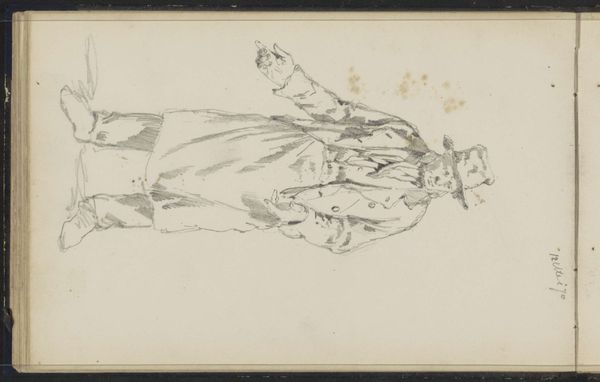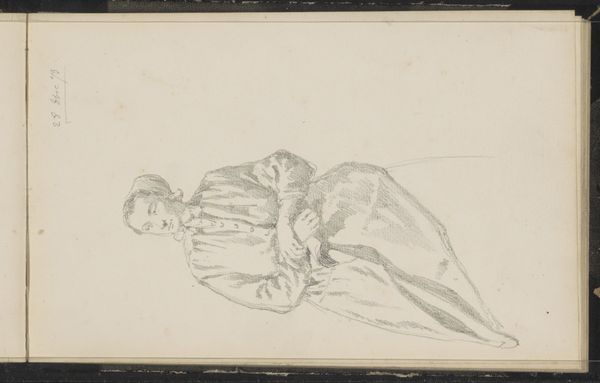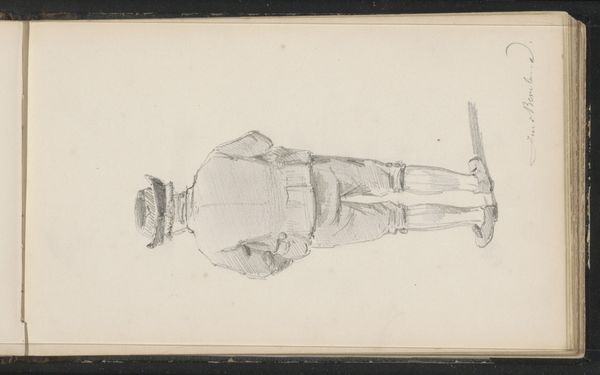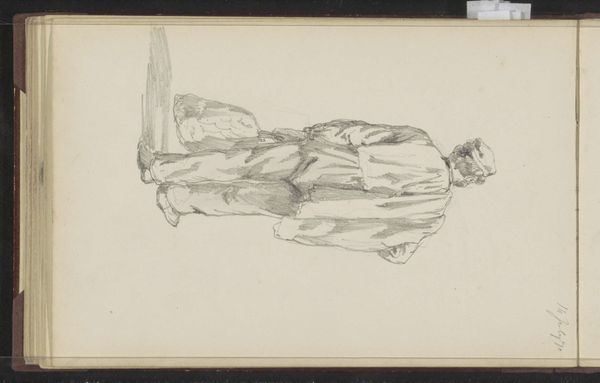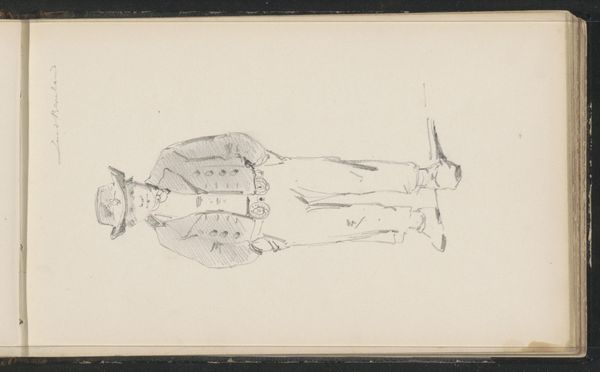
Copyright: Rijks Museum: Open Domain
Editor: So here we have Cornelis Springer's "Vrouw in zeventiende-eeuwse kleding met hoofddoek", roughly from the mid-19th century. It’s at the Rijksmuseum, a sketch, looks like graphite on paper. The detail in the folds of her clothing is what really stands out. What are your thoughts on this piece? Curator: Looking at this drawing, I'm immediately drawn to consider the conditions of its production. This wasn’t made in a vacuum. Consider the paper itself: Where did the materials come from? What labor was involved in its making? Was it mass-produced, hinting at an industrializing world impacting artistic creation, or a carefully handcrafted item, reflecting an older tradition of artisan labor? Editor: That's fascinating. I wouldn’t normally think about where the paper came from, focusing instead on the artistic merit. Curator: Exactly! Now, observe the graphite. Springer, working mid-19th century, benefited from advancements in graphite mining and pencil production. This availability facilitated sketching like this, allowing for quick studies. This wasn’t a precious metalpoint drawing; this was a relatively cheap, reproducible medium. The sketch wasn't about the inherent value of materials, but the quick translation of observation. What kind of access to clothing would Springer have, in his studio? Did he reconstruct outfits from models, or was the outfit his own? Editor: It does look like he’s capturing the *idea* of 17th-century clothing, more than precise historical detail. Curator: Precisely! And that relates to the consumption of the past itself. The past wasn’t just “there;” it was repackaged, sold, and commodified. He's engaging with, and to a certain extent, *selling* a romanticized vision. Editor: That makes so much sense. Seeing it as a material object shaped by specific economic and social forces… it gives it a whole new dimension. Curator: It helps us to ask critical questions about not just the image but how the conditions of making reflect broader societal structures. Editor: Well, I’ll never look at a sketch the same way again! Thanks.
Comments
No comments
Be the first to comment and join the conversation on the ultimate creative platform.




